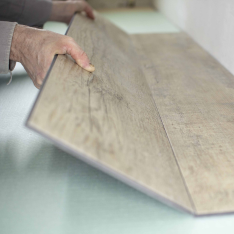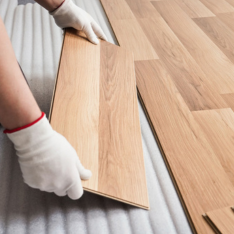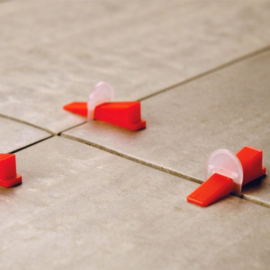When it comes to outdoor flooring, subsoil preparation is of crucial importance. A good subsoil for outdoor flooring not only ensures proper installation but also guarantees the durability and stability of the flooring itself.
Properly preparing the subsoil might seem like a difficult task, but by following a few simple steps, you can achieve excellent results. A well-prepared subsoil reduces the risk of future problems like cracks or subsidence, and contributes to an outdoor surface that is not only aesthetically pleasing but also functional.
In this article, we will explore the various aspects of subsoil preparation, from soil analysis to the ideal materials to use. Additionally, we will discover the necessary steps to ensure your outdoor area is ready for a perfect installation.
The Importance of a Well-Prepared Subsoil for Outdoor Flooring
Subsoil preparation is an often overlooked aspect, but it is crucial for the success of any outdoor flooring project. An inadequate subsoil can lead to a series of problems, including tile lifting, water pooling, and premature wear. Here are the main reasons why a good subsoil is essential:
- Stability and strength. A well-compacted and leveled subsoil provides a solid foundation for the flooring, ensuring that tiles or slabs do not move over time. This is particularly important in areas subject to heavy loads or heavy foot traffic.
- Efficient drainage. Proper subsoil preparation helps manage excess water, preventing accumulation that could damage the flooring. The presence of a good drainage system reduces the risk of infiltration and pooling.
- Durability. Investing time in subsoil preparation means saving money in the long run. Outdoor flooring properly installed on an adequate subsoil lasts longer, reducing the need for frequent repairs and replacements.

Outdoor Flooring Subsoil: How to Prepare It for Proper Installation
Preparing the subsoil for outdoor flooring is a crucial step to ensure its long-term durability and stability. Here are the main aspects to consider:
1. Soil Analysis
The first phase in preparing the subsoil for outdoor flooring is soil analysis. Before starting any work, it's important to understand the type and condition of the ground you will be working on. Here’s how to proceed:
- Visual inspection. Start with a visual inspection of the area. Look for signs of erosion, moisture, or other issues that could affect the flooring installation.
- Soil test. Perform a soil test to determine its composition, density, and drainage capacity. You can do this using a commercially available soil analysis kit. This will give you valuable information on how to proceed.
- Stability assessment. Finally, check the stability of the ground. If the soil is too soft or unstable, modifications might be necessary, such as adding reinforcement materials or removing unsuitable soil layers.
2. Drainage Techniques for Outdoor Flooring Subsoil
One of the most common issues with outdoor flooring is managing rainwater or irrigation water. Here are some drainage techniques you can implement to ensure your subsoil can effectively manage water:
- Drainage trenches. Creating drainage trenches around the area to be paved can help divert rainwater away from the surface. Ensure the trenches have the proper slope so that water flows away.
- Drainage material. Use drainage materials like gravel or crushed stone in your subsoil. These materials promote water flow and reduce the risk of pooling.
- Geotextiles. Consider using geotextiles to separate the soil from the drainage material. This helps maintain the subsoil's stability and prevents contamination of the drainage material with soil.
Implementing a good drainage strategy will not only protect your outdoor flooring but also ensure a long life for your project. Never overlook this crucial step during subsoil preparation.
3. Soil Compaction: Why It's Crucial
Soil compaction is a fundamental step in preparing the subsoil for outdoor flooring. Well-compacted soil offers numerous advantages:
- Elimination of voids. Compaction reduces the risk of voids under the flooring, which could cause subsidence or cracks over time. It is imperative that the ground is solid and uniform.
- Stability. Compacted soil provides a solid base that withstands loads and pressures. This means your flooring will be able to support weight without deforming.
- Ease of installation. Compaction also facilitates the installation itself, as a uniform and solid ground makes aligning and installing tiles or slabs easier.
To effectively compact the soil, you can use tools like roller compactors or vibrating plates. Ensure you compact the soil in layers, working on small sections at a time for the best results.
4. Outdoor Flooring: Ideal Materials for the Subsoil
Choosing the right materials for the outdoor flooring sub-base is crucial for ensuring a durable installation. Here are some of the most commonly used materials and their characteristics:

When choosing the material, consider the type of flooring you plan to install and the climatic conditions of your area. A good sub-base will ensure your outdoor flooring remains in excellent condition for many years.
5. How to Properly Level the Subsoil
Leveling the subsoil is an operation that requires attention and precision. A leveled subsoil not only improves the aesthetics of the flooring but also prevents future problems. Here’s how to proceed:
- Necessary tools. Ensure you have the right tools available, such as a level, a straightedge, and, if necessary, a concrete mixer for mixing materials.
- Checking slopes. During the leveling process, check the slopes to ensure water drains correctly. A slope of about 2% is generally recommended.
- Final compaction. After leveling the subsoil, proceed with a final compaction. This will ensure the ground remains stable and that there is no unevenness over time.
Remember that proper subsoil preparation can mean the difference between a successful outdoor flooring project and one plagued with problems. Don't rush this step and take the necessary time to do it correctly.
6. Subsoil Insulation and Waterproofing
Insulating and waterproofing the subsoil are fundamental steps to protect outdoor flooring from moisture and frost. Here are some tips on how to proceed:
- Waterproofing materials. Use waterproofing membranes or specific products to insulate the subsoil. These materials create a barrier against water and moisture, protecting the flooring.
- Thermal insulation. If you live in an area with harsh winters, consider using insulating materials to prevent the ground from freezing and thawing, which can compromise the flooring's stability.
- Condensation control. Be sure to control condensation, as it can lead to the formation of mold or fungi. Adequate insulation promotes ventilation and reduces the risk of moisture-related problems.
Implementing insulation and waterproofing measures will not only extend the life of your outdoor flooring but also help maintain a healthy and safe environment.
Common Mistakes to Avoid in Subsoil Preparation
When it comes to preparing the subsoil for outdoor flooring, there are some common mistakes that are crucial to avoid. Here is a list of the most frequent ones:
- Underestimating the importance of compaction. Not compacting the ground adequately can lead to stability problems in the future. Make sure to follow proper compaction techniques.
- Not checking the drainage. Ignoring drainage can cause serious infiltration problems. Ensure you plan a good drainage system.
- Using inadequate materials: Choosing unsuitable materials can compromise the quality of the subsoil. Be careful to select materials that are appropriate for the type of flooring you intend to install.
- Rushing the process. Haste can lead to costly mistakes. Take the necessary time to prepare the subsoil correctly.
- Not consulting experts. If you are unsure how to proceed, do not hesitate to consult a professional. An expert can provide valuable advice and guidance.
Avoiding these mistakes will help ensure that your outdoor flooring project is a success.
Expert Tips for a Perfect Subsoil
Here are some tips from industry experts to ensure a perfect subsoil:
- Planning. Before starting, plan each phase carefully. Good planning will allow you to avoid unforeseen issues and work more efficiently.
- Check weather conditions. Avoid working in adverse weather conditions. Rain or frost can compromise subsoil preparation.
- Do your research. Educate yourself on the best practices and techniques for subsoil preparation. There are many resources available online and at specialized stores.
- Don't forget maintenance. After installing the flooring, don't forget to perform periodic checks to verify the condition of the subsoil and the flooring itself. This will allow you to intervene promptly if problems arise.
- Ask for help if necessary. Do not hesitate to contact professionals if you have doubts. It is better to invest in an expert than to face costly problems in the future.
Conclusion: The Importance of a Well-Made Subsoil for the Durability of Outdoor Flooring
In conclusion, preparing the subsoil for outdoor flooring is a fundamental step that must not be overlooked. A well-prepared subsoil not only ensures proper installation but also protects your investment by extending the life of the flooring. By following the guidelines and tips provided in this article, you will be able to create a solid and durable foundation for your outdoor flooring project.















